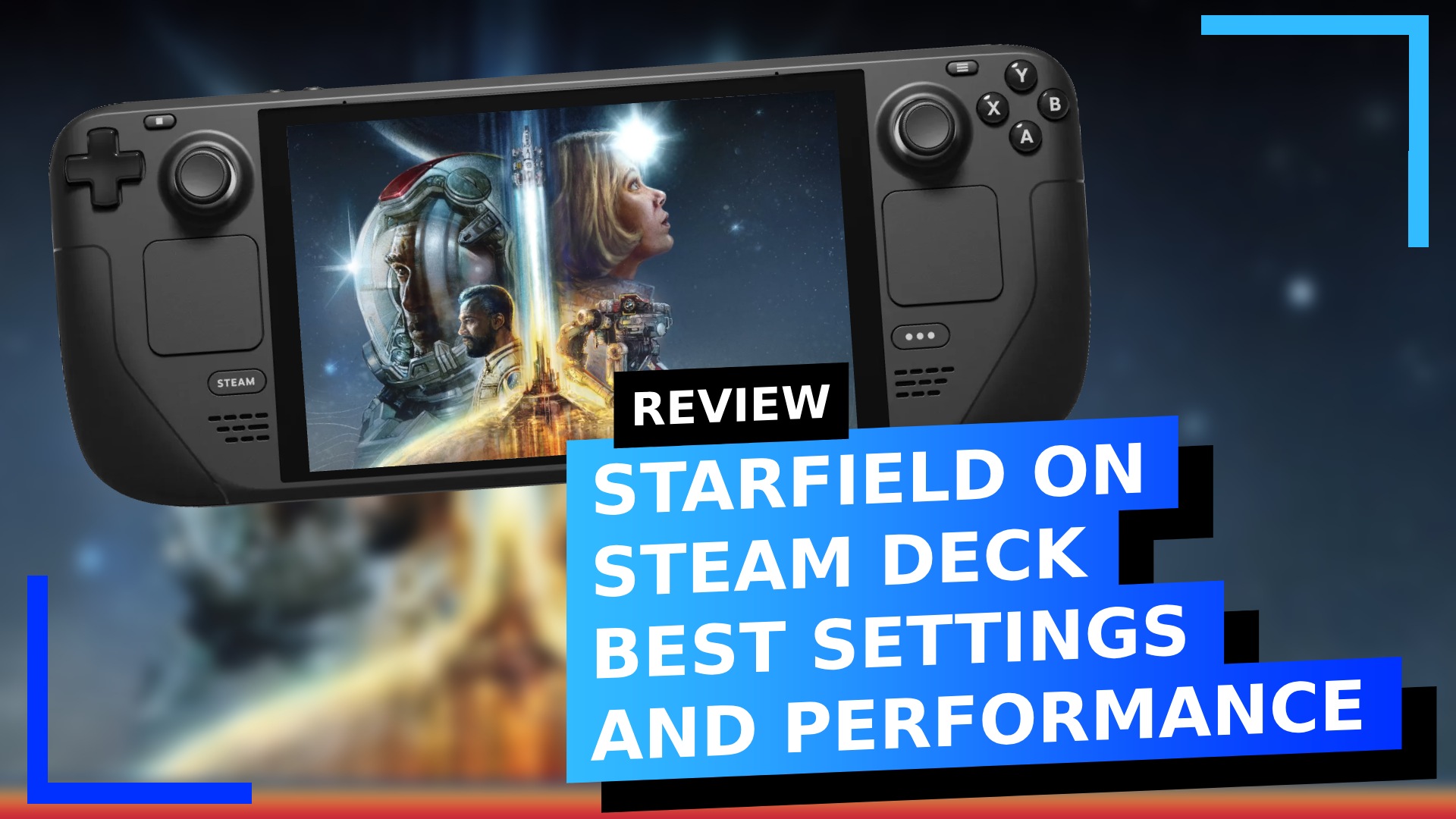How well does Starfield run on the Steam Deck and should you pick it up? Read on to find out in this first-look performance review of Starfield on Steam Deck.
Starfield Steam Deck Performance Is Poor.
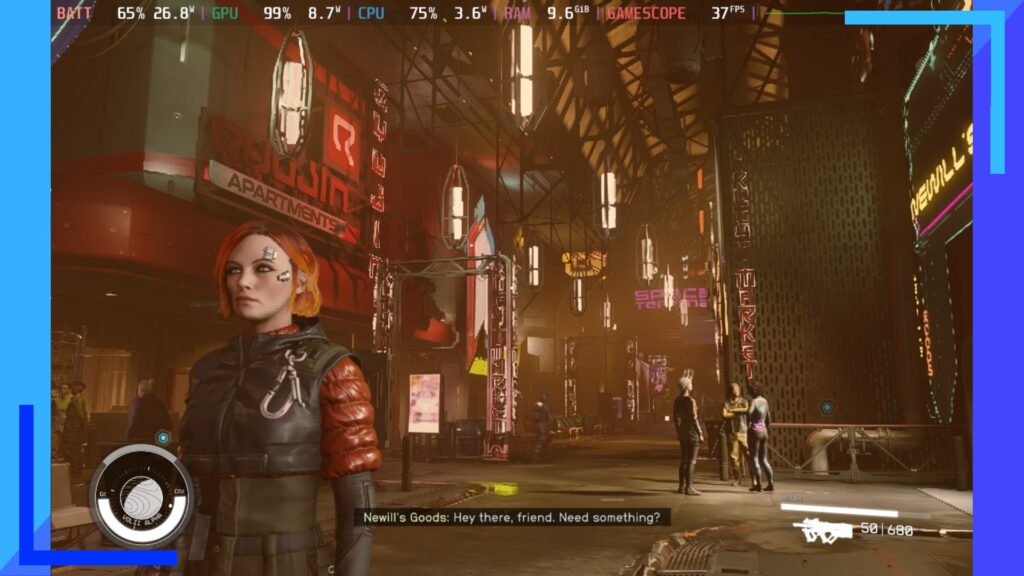
Starfield is playable on the Steam Deck via Steam but it’s currently the worst way to play the game. Some areas run at an acceptable framerate. I don’t think anyone was expecting Starfield to run at 60 frames per second on the Steam Deck but the hope was that it would be a mostly 30 frames per second game.
Some areas do run with minimal issues – indoor environments and starship exploration and combat can hit 30 frames per second for the most part and that’s where the glimmer of hope is.
But the illusion is shattered the moment you need to do anything that requires more power. The busy city areas, combat featuring multiple characters on-screen, even walking around your starship to drop off loot or talk to crewmates result in massive frame drops.
I averaged around 20 to 25 frames in those areas with lows going all the way down to 19 frames. It’s not great. If Starfield could stick at a consistent 25 frames it wouldn’t be so bad. I played Baldur’s Gate 3 at 25 frames per second and it was manageable. But Starfield is simply too ambitious for the Steam Deck’s lesser hardware.
Why Is Starfield’s Performance So Bad?
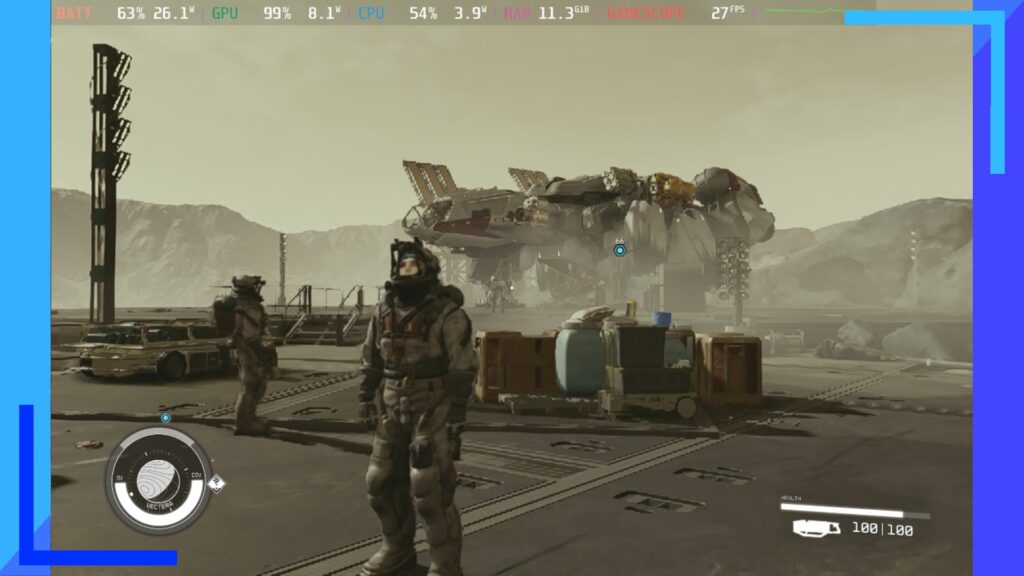
Starfield suffers from a lack of optimization on low-end hardware. Even though it’s been designed to run on an Xbox Series S, which itself is low-end compared to the Series X and PS5, the Series S still has more power than the Steam Deck to offer what Starfield needs to run smoothly.
The other problem I found is the GPU usage is almost always maxed out. If Starfield needs extra juice to help an area run to its fullest, there simply isn’t enough spare to alleviate its problems. It’s the same for the CPU for the most part, with all cores running above 80 percent at most times.
And then there are general Starfield optimization issues. Even on the ASUS ROG Ally, with my 4090 XG Mobile attached, I’d suffer drops in certain areas. Even with this higher level of power with the settings dropped down to low, there’s no getting around the lower frame count when things get hectic.
Bethesda has done a better job of fixing bugs this time around, but Starfield on PC devices feels geared toward high-end hardware (read: a 4090 PC) if you want a solid, high framerate.
Recommended Settings.
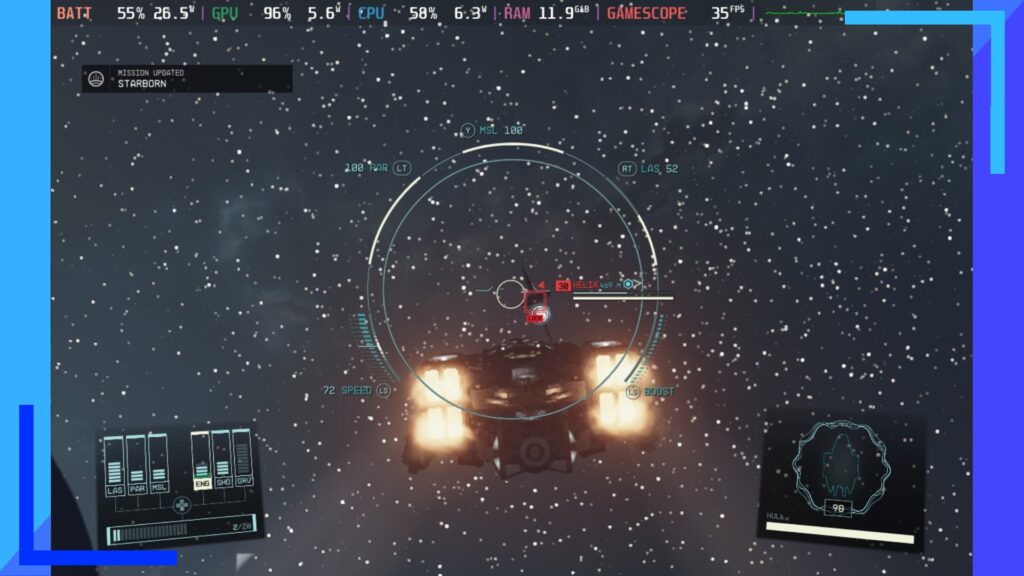
Before you do anything you’re going to want to switch the Proton version over to experimental. The difference in performance isn’t massive, but we need every slight advantage we can get.
I also need to point out that the start and select buttons are flipped on the Steam Deck. I’d wager this is a bug with Proton and will be fixed down the line, but for now it’s something to keep in mind. Also, if you find your right stick isn’t working, shut down the Steam Deck and reboot it. The same goes for if Starfield won’t boot after exiting sleep mode.
So, first things first. In the Steam Deck quick access menu (the “…” button) turn on allow tearing. This can help to get a few extra frames under certain conditions.
For the settings themselves, turn everything down to low and make sure vsync is turned off to get the most out of the allow tearing option.
I’d also have a play with the dynamic resolution. The best results are found at 50 percent. The game looks blurry, but these are the sacrifices we have to make. I did find you can get away with 75 percent in the higher performing areas, but that means you’ll need to be constantly changing your resolution scale and not everyone – myself included – has the patience for that.
Back in the quick access menu, I’d also recommend sticking a framerate lock of 30 on. Starfield doesn’t go much higher than that but it does free up some extra juice and a handful of minutes battery life.
| Starfield Steam Deck Settings | |
| Window Size | 1280×720 |
| Dynamic Resolution | On |
| Render Resolution Scale | 50% to 75% |
| Shadow Quality | Low |
| Indirect Lighting | Low |
| Reflections | Low |
| Particle Quality | Low |
| Volumetric Lighting | Low |
| Crowd Density | Low |
| Motion Blur | Low |
| GTAO Quality | Low |
| Grass Quality | Low |
| Vsync | Off |
| Upscaling | AMD FSR 2.0 or FSR 3.0 |
| Sharpening | Full |
| Enable VRS | Off |
| Film Grain Intensity | Minimum |
| Enable Depth of Field | Off |
| Steam Deck Settings (Quick Access Menu) | |
| TDP: 15 | Estimated Battery Life: 1 Hour 10 minutes |
| Docked Mode Resolution: 1280x720 | FSR: On (Docked Mode) |
| GPU Usage: 99% | Temperature: 80 degrees |
| Battery Drain: 27w | Framerate Limit: 30 |
| Extra Info | |
| Fills the Entire Steam Deck Screen | Yes |
| Valve Grading | Unknown |
| Performance Rating: 1/5 | |
Can Mods Increase Starfied’s Performance?
I’ve had some luck with Starfield running on Steam Deck by playing it with a mix of mods and CryoUtilities.
Check out my full guide here, but the general idea is to install the Steam Deck Essentials mod, which helps it perform better at the cost of visual fidelity, and CryoUtilities.
CryoUtilities changes the base Steam Deck settings and can help select games to run more smoothly. In Starfield’s case, when paired with the mod I was able to get an extra six frames in the harder-to-run areas. That may not sound like much, but it’s the difference between running the game below 30 frames per second and above.
This setup won’t fix everything, but it does help to alleviate some of the problems when running Starfield on the Steam Deck.
Verdict.
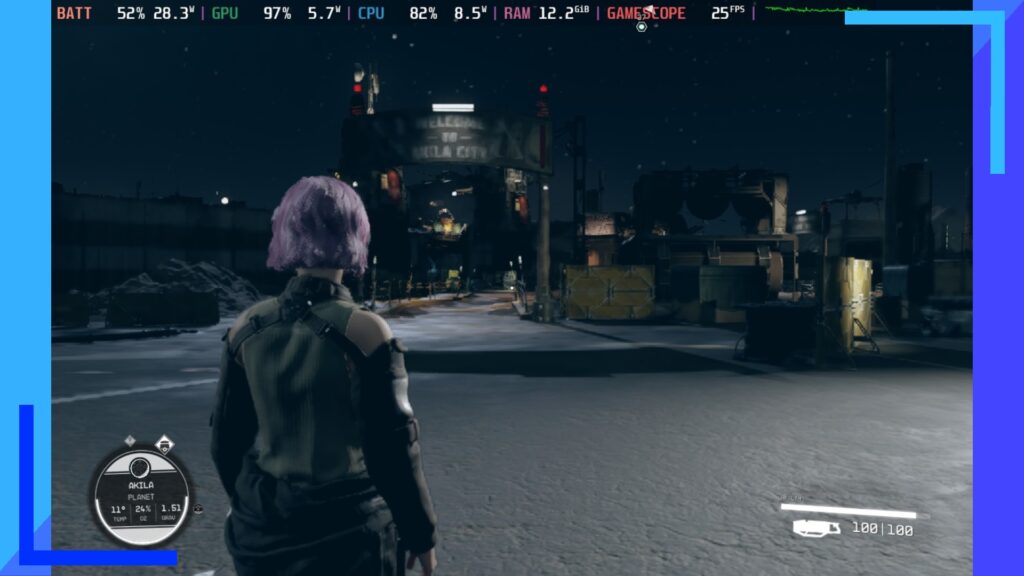
There’s no getting around the fact the Steam Deck simply isn’t powerful enough to run Starfield. Combine that with Starfield’s shaky optimization and it’s a match made in hell.
It’s such a shame as well because I’ve been having a blast playing Starfield on anything that isn’t the Steam Deck. Performance is inconsistent, Proton currently isn’t set up correctly, and visually it looks like a starry soup due to needing to tank the resolution to get something that even vaguely resembles playable.
In the areas that run well, Starfield is a joy on the Deck, but those areas are always a few minutes away from something that’s going to make the experience miserable.
It’s hard to blame the game’s developer, Bethesda, too much either. This is what happens when you game on a portable device that isn’t powerful enough to run the latest and more complex games. If this were a linear shooter, sure. But as an RPG with interlinking systems on interlinking systems, it makes sense the Steam Deck can’t run Starfield well.
Unless Bethesda devotes the time to the Steam Deck specifically, or Valve’s wizards jump in to fix the situation, Starfield’s grand adventure among the stars is destined to crash and burn.
All images were captured on Steam Deck hardware by Wesley Copeland.

